Exploring Budapest’s Jewish Quarter Through a German-Language Tour
If you’re curious about Budapest’s vibrant Jewish community and want a taste of its history, this Jewish Budapest tour offers a compact, enriching experience. It’s a 1.5-hour stroll that takes you through key sites like the Great Synagogue, the Rumbach Synagogue, and the Kazinczy Street Synagogue, all narrated in German by a knowledgeable guide, Gábor Glasner. The tour, costing a modest fee, is perfect if you’re short on time but eager to understand the past and present of Budapest’s Jewish life.
What makes this tour especially appealing are two things. First, the insightful storytelling about the different Jewish communities and their traditions—something that’s often missing in more superficial visits. Second, the chance to sample a traditional Jewish dessert, Flodni, which adds a delicious layer to your understanding of local customs. The tour is also wheelchair accessible, making it a thoughtful choice for travelers with mobility needs.
However, a potential consideration is that inside visits to the synagogues are not included—you’ll see them from the outside. If an interior tour is what you’re after, you might need to look elsewhere. This tour is best suited for curious travelers who want solid historical context, enjoy walking through neighborhoods with stories to tell, and appreciate authentic local flavors.
Key Points
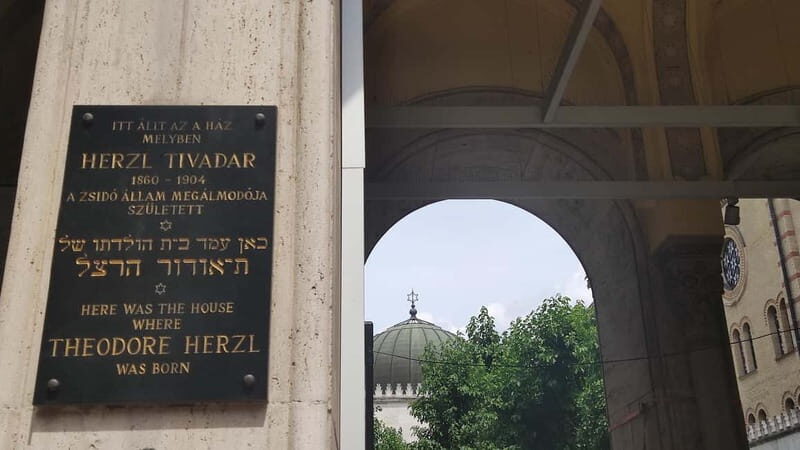
- Focused on the Jewish Quarter: Covers major synagogues and landmarks without overwhelming.
- In-depth storytelling: Guides share detailed history and customs behind Budapest’s Jewish community.
- Tasty experience: Includes sampling Flodni, a traditional Jewish dessert.
- Approximate duration: 1.5 hours, making it manageable even during a busy sightseeing day.
- German-language tour: Perfect for German speakers or those wanting to practice their language skills.
- Accessibility: Wheelchair friendly, broadening the appeal.
A Deep Dive into the Jewish Budapest Tour
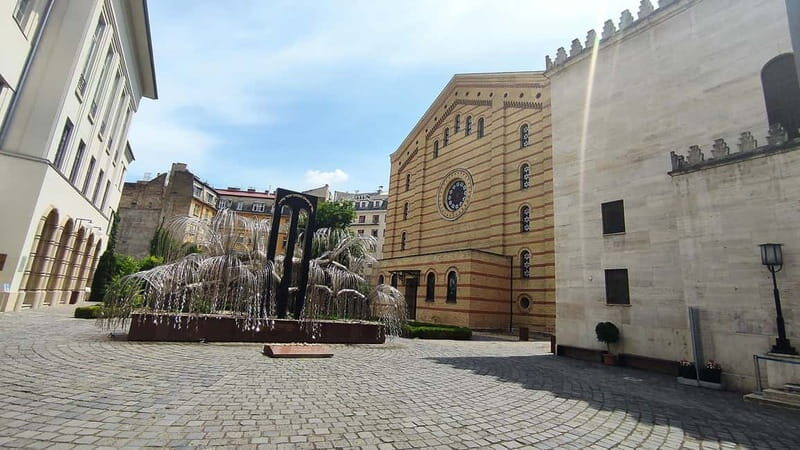
For broader city exploration in Budapest, we've covered these other tours
The Starting Point: Madách tér
The tour begins at Madách Imre tér, known as the “Gate to the Jewish Quarter.” This is an ideal starting point because it’s right at the entrance to Budapest’s historic Jewish neighborhood. Our guide, Gábor Glasner, meets us behind the statue of Empress Elisabeth (Sisi), clearly wearing his badge so we can spot him easily. Here, we get a brief overview of Budapest’s Jewish history, setting the stage for what’s to come.
Visiting the Great Synagogue and its Surroundings
The Dohány Street Synagogue, the largest in Budapest and the second-largest in Europe, is a highlight. While the tour does not include an inside visit, seeing it from the outside—its Moorish Revival architecture—immediately conveys its importance. Nearby, we visit the small Jewish cemetery and the Emanuel Tree, a Holocaust memorial. This site, often overlooked, powerfully reminds visitors of the community’s resilience and tragic history.
Exploring the Kazinczy Street Synagogue and the Orthodox Community
Next, we walk to the Kazinczy Street Synagogue, a center of the more conservative Jewish community. These stops are spaced out with short walks, giving us a chance to appreciate the neighborhood’s vibe. Gábor shares stories about the different groups—Orthodox, Conservative, and more liberal factions—and how their traditions influence daily life. We also see the Mikve, a ritual bath, and learn about the religious practices that remain vital today.
More Great Tours NearbyRumbach Street Synagogue and Post-War History
The journey concludes at the Rumbach Street Synagogue, which embodies the post-Holocaust revival of the Jewish community. Gábor discusses the division among Jewish groups and provides context about Budapest’s Jewish history during and after WWII. The guide’s storytelling is clear and engaging, making complex historical events accessible without oversimplifying.
- Budapest Danube Cruise with Buffet Dinner, Performances and Music
- Budapest: Unlimited Prosecco, Beer & Aperol Spritz Cruise
- Budapest Danube River Candlelit Dinner Cruise with Live Music
- Countryside Half-day Wine Tour near Budapest with Meal and Pickup
- Guided Tours in Budapest on MonsteRoller e-Scooter
- Budapest Highlights Bike Tour
Tasting Flodni and Learning About Cuisine
A highlight for many is the tasting of Flodni, a traditional Jewish dessert made of layered apple, walnut, poppy seed, and plum jam. Lydia, one of the reviewers, called the tour “Sehr schöne interessante Tour mit leckerem Dessert,” emphasizing how the taste caps off the cultural insights perfectly. It’s a small but meaningful way to connect with Jewish customs through culinary tradition.
Final Impressions
The tour wraps up back at Rumbach Synagogue, giving a comprehensive yet manageable overview of Budapest’s Jewish history. Gábor’s expertise shines through, as he explains the divisions within the community, Holocaust impacts, and current life in Budapest today. The fact that it is a German-language tour allows for a deeper comprehension if you’re fluent or learning German, or simply want clear, detailed narration.
Pricing and Value
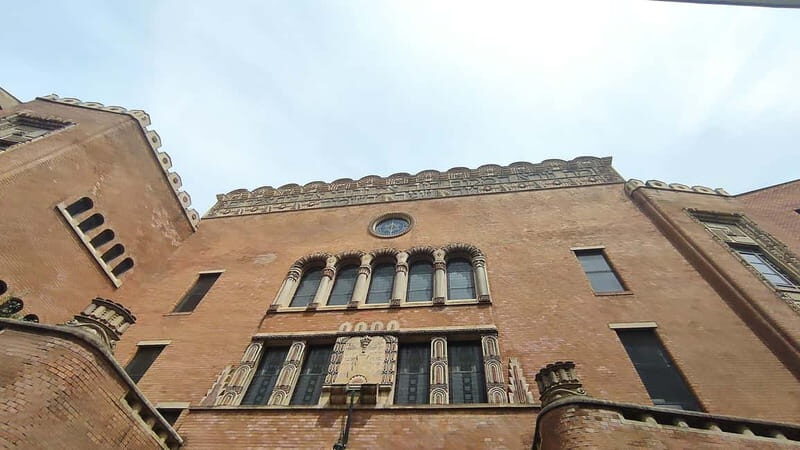
At a reasonable price, this tour offers excellent value for travelers interested in Jewish history but short on time. While there’s no inside access to the synagogues, the outside visits are carefully curated and highly informative. The inclusion of Flodni adds an authentic flavor that you wouldn’t get with a typical walking tour.
Who Is This Tour For?
This experience is ideal for travelers with an interest in history, culture, and religion who prefer guided storytelling over self-guided wandering. It’s especially good for those who speak German or want to improve their language skills. The accessible, walking-based format makes it suitable for most fitness levels, and the focus on authentic traditions ensures an immersive feel.
The Sum Up
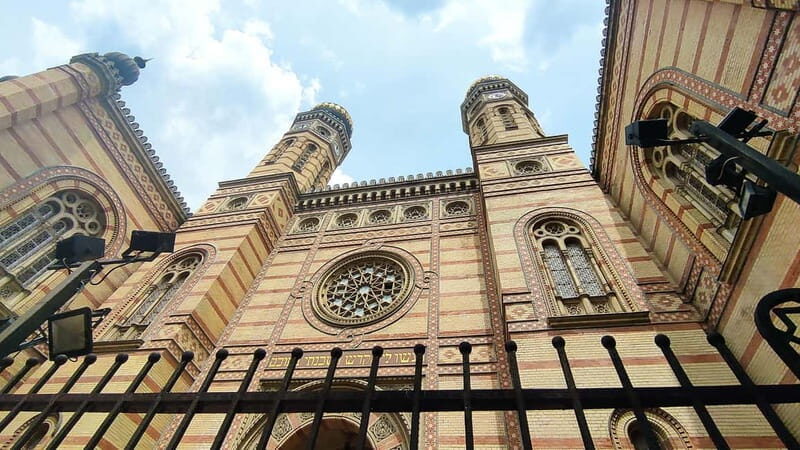
This Jewish Budapest tour strikes a nice balance of history, culture, and flavor within a short timeframe. It’s perfect if you want a well-rounded introduction to Budapest’s Jewish quarter without committing to a full-day or inside visits. The knowledgeable guide, combined with the meaningful insights and the Flodni tasting, makes it a memorable experience.
It’s especially suited for visitors who value context and authentic stories and appreciate a leisurely, manageable pace. If you’re keen to understand the diversity within Budapest’s Jewish community, from Orthodox to more liberal groups, this tour delivers an engaging and respectful introduction.
Whether you’re passionate about history, curious about local traditions, or simply love tasting new desserts, this tour offers a genuine connection to Budapest’s Jewish heritage—an important piece of the city’s identity.
FAQ
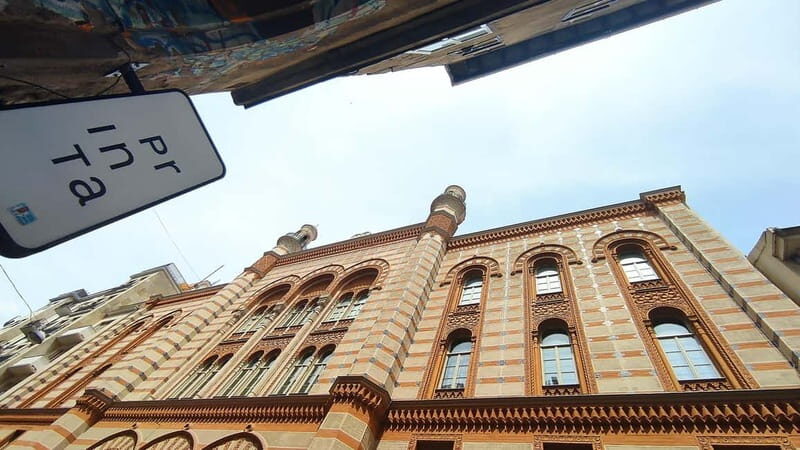
Is this tour suitable for someone with mobility issues?
Yes, the tour is wheelchair accessible, so most travelers with mobility needs should find it manageable.
Do I get inside the synagogues?
No, the tour views the synagogues from the outside only. If interior visits are your priority, you might need to find other options.
Is the tour conducted in English?
No, it is a German-language tour, ideal for German speakers or those comfortable with the language.
How long does the tour last?
It lasts approximately 1.5 hours, making it a good option for fitting into a busy sightseeing schedule.
What’s included in the price?
You get the guided tour in German and a tasting of Flodni, a traditional Jewish dessert.
Can I cancel if my plans change?
Yes, you can cancel up to 24 hours in advance for a full refund.
Is this tour suitable for families?
While it’s generally appropriate for most ages, the focus on history and walking might be better suited for older children or teenagers with an interest in culture.
This tour offers a respectful, insightful, and tasty introduction to Budapest’s Jewish heritage. It balances historical understanding with authentic experiences, making it a valuable addition to any Budapest visit.
You can check availability for your dates here:More City Tours in Budapest
- Full day private city tour in Budapest – 8 hours
- Budapest: City Center Walking Tour
- City Quest Budapest Unravel the Secrets of this town
- Budapest: Private 3-hour Guided City Tour by Bus
- Budapest PRIVATE city tour and FOOD TOUR in Central Market Hall
- SzentEndre-SaintAndrew City Privately Shopping and Picturesque
More Tours in Budapest
More Tour Reviews in Budapest
More Budapest experiences we've covered
- Budapest: Sightseeing Cruise on the Danube
- Rudas Bistro VIP Wellness Weekend and Dining Ticket
- Palace of Queen Elisabeth Tour
- Lake Balaton private wine tasting and sightseeing from Budapest
- Budapest: Personalised Photo Tour
- Explore Budapests Art and Culture with a Local
- Private Photography Tour in Budapest with Gabor Lukacs
- Private 4-hour Walking Tour of Budapest with official tour guide
- Bespoke Budapest Tour with Rivercruise
- Hike, nature & picturesque view over Budapest
- Budapest-Vienna private transfer with a luxury van
- Budapest: Private Guided Segway Tour
